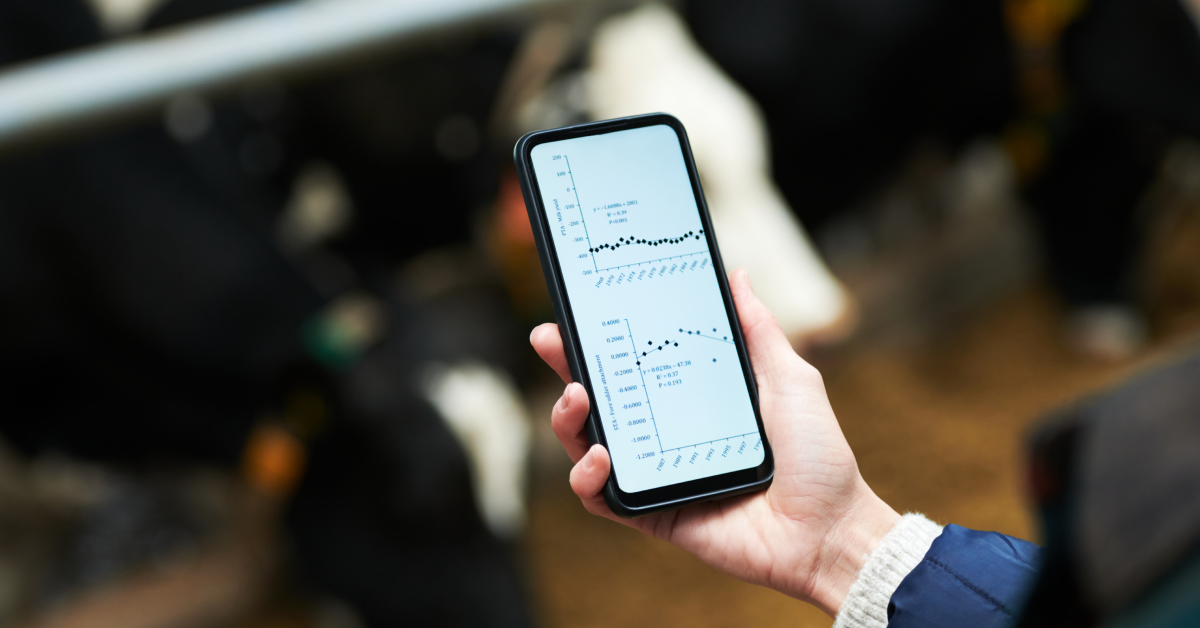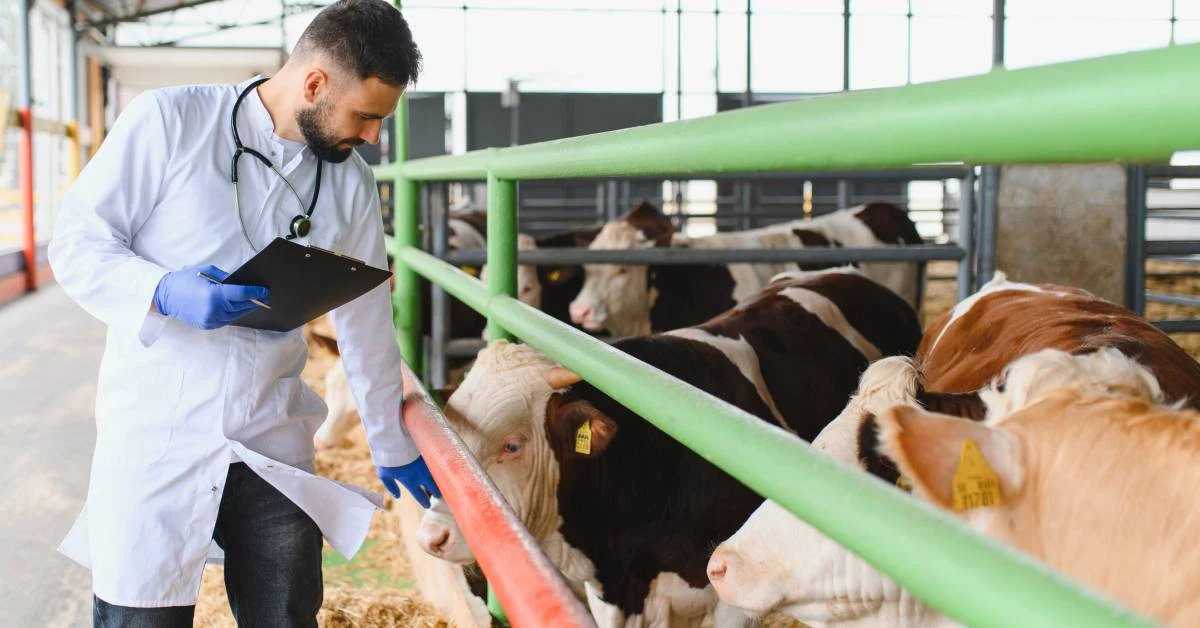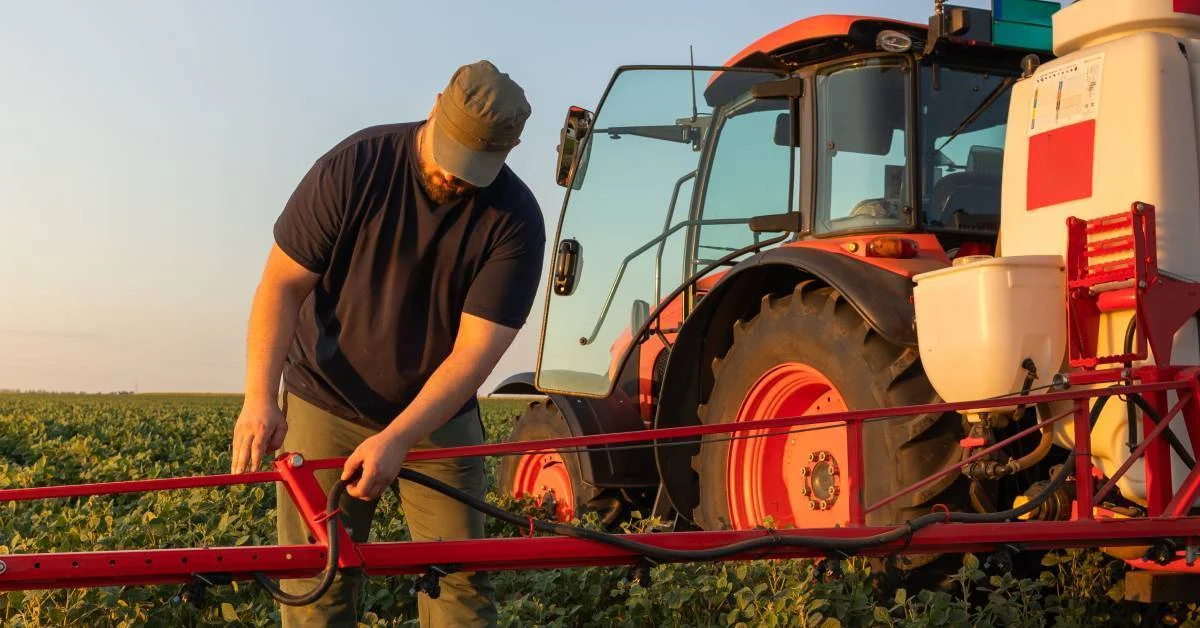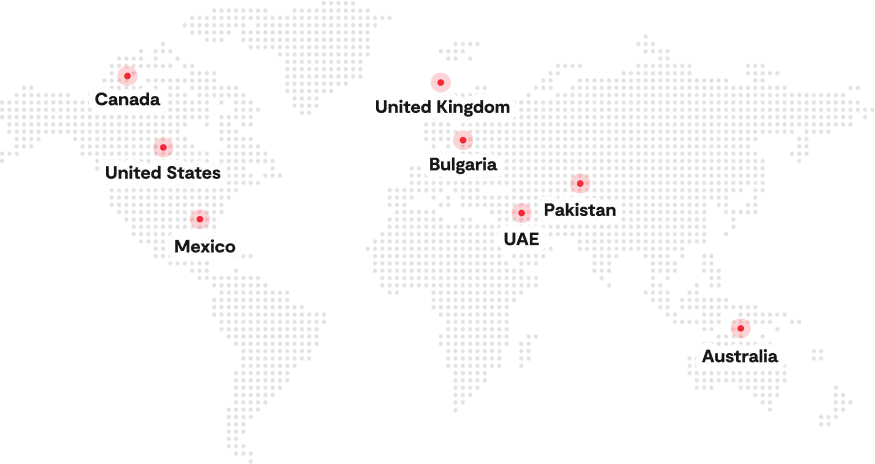Feedlots, concentrated animal feeding operations (CAFOs) specializing in fattening cattle before slaughter, are a cornerstone of the modern beef industry and vital in the global food supply chain.
However, ensuring compliance with animal welfare regulations, environmental impact, and food safety is an ongoing challenge. These facilities play a critical role in meeting the global demand for protein, but their operations must navigate a dynamic landscape.
Technological advancements constantly reshape feedlot cattle practices, while regulatory requirements concerning animal welfare, environmental impact, and food safety are subject to change.
Feedlot cattle operators must embrace new technologies that optimize production and ensure compliance with ever-changing regulations to thrive in this evolving environment.
Keep reading this blog to explore how these innovative solutions, like Folio3 Agtech Cattlytics Cattle Management Software, transform feedlot cattle management and ensure a sustainable and responsible future for the industry.
Challenges and Opportunities in the Feedlot Cattle Industry
The feedlot cattle industry, a vital part of the global beef supply chain, faces several pressing challenges while presenting exciting growth and improvement opportunities. Here’s a closer look at both sides of the coin:
Challenges
- Rising Feed Costs and Profitability: Feed costs, primarily corn and soybeans, are a significant expense for feedlot operators. Fluctuations in grain prices due to weather, market conditions, and global factors can significantly impact profit margins.
- Environmental Impact and Regulations: Feedlots face increasing scrutiny regarding their ecological footprint, including concerns about manure management, water usage, and greenhouse gas emissions. Stricter regulations and consumer pressure necessitate sustainable practices and responsible waste management.
- Animal Welfare Concerns and Evolving Regulations: Animal welfare is a priority for consumers and regulatory bodies. Issues like cattle handling, space allocation, and pain management are under constant review. Feedlot operations must adapt to evolving regulations and best practices to ensure the ethical treatment of animals.
- Labor Shortages and the Need for Automation: The feedlot industry faces a shortage of skilled labor, making automation an attractive solution. However, implementing automation technology requires significant upfront investment and ongoing maintenance.
Opportunities
- Precision Feeding Technologies for Efficiency and Resource Utilization: Technological advancements like automated feeders and ration management systems allow for precise feed delivery based on individual animal needs. This optimizes feed utilization, reduces waste, and improves animal performance.
- Big Data Analytics for Decision-Making and Risk Management: The abundance of data generated in feedlot operations, from animal weight gain to feed consumption patterns, can be harnessed through big data analytics. These insights empower feedlot cattle managers to make informed decisions regarding animal health, resource allocation, and risk management strategies.
- Automation and Robotics to Streamline Operations and Reduce Labor Dependence: Automation solutions like Folio3 Agtech cattle management software can alleviate labor shortages while improving operational efficiency. This frees up human resources for higher-level tasks like animal monitoring and oversight.
- Advancements in Animal Health Monitoring and Disease Prevention: New technologies like wearable sensors and real-time health monitoring systems can help detect early signs of illness in cattle. Early intervention can minimize disease outbreaks, improve animal welfare, and ensure food safety.
The Role of New Technologies in Feedlot Cattle Management – A Look at High-Potential Solutions
The feedlot cattle industry is on the cusp of a technological revolution. Innovative solutions like Folio3 Agtech cattle management software are emerging, with immense potential to improve efficiency, sustainability, and animal welfare. Let’s delve into some of the most promising technologies transforming feedlot management:
Precision Feeding Systems – Tailored Nutrition for Optimal Performance
Gone are the days of one-size-fits-all feeding in feedlots. Precision feeding systems leverage a combination of automated feeders and in-pen sensors to deliver customized rations to individual animals. These systems typically involve:
- Automated Feeders: Equipped with advanced technology, these feeders dispense precise amounts of feed based on factors like an animal’s weight, age, and growth stage.
- In-Pen Sensors: Strategically placed sensors track animal behavior and feed intake patterns.
The benefits of precision feeding are multifaceted:
- Improved Feed Conversion Ratios: These systems minimize feed waste and optimize feed conversion ratios by providing the right amount of nutrients for each animal, leading to significant cost savings.
- Reduced Waste: Precision feeding eliminates the need for overfeeding, minimizing leftover feed that can decompose and contribute to environmental concerns.
- Better Animal Performance: Targeted nutrition ensures animals receive the optimal balance of nutrients for growth, resulting in improved weight gain and overall animal health.
Big Data and Analytics – Transforming Data into Actionable Insights
The modern feedlot generates a wealth of data – from animal weight gain and feed intake patterns to environmental factors like temperature and humidity. Big data and analytics platforms are crucial in collecting, storing, and analyzing this data. These platforms typically involve:
- Data Management Platforms: These are central hubs for collecting data from various sources, including automated feeders, sensors, and animal health records.
- Advanced Analytics Tools: Sophisticated algorithms analyze the collected data, identifying patterns and trends that might not be readily apparent to the human eye.
The power of big data in feedlot management lies in its ability to:
- Optimize Feed Formulations: Data analysis can reveal the most effective feed combinations for different animal groups, leading to more targeted nutrition strategies.
- Predict Health Issues: Analytics can help predict potential health concerns before they escalate by identifying subtle changes in feeding patterns or behavior, allowing for early intervention.
- Improve Overall Management Practices: Data-driven insights empower feedlot cattle managers to make informed decisions regarding animal health, resource allocation, and management strategies.
Automation and Robotics – Efficiency and Improved Hygiene
Automation and robotics transform feedlot cattle operations by taking over repetitive and labor-intensive tasks.
Some key areas of automation include:
- Automated Manure Handling Systems: These systems eliminate the need for manual manure removal, reduce labor requirements, and improve hygiene within feedlot cattle.
- Robotic Feed Delivery Systems: Autonomous robots can navigate pens and deliver precise amounts of feed to designated locations, increasing efficiency and reducing reliance on human labor.
- Automated Animal Monitoring Technologies: Camera systems and other automated monitoring tools can track animal behavior and identify potential health issues 24/7, improving overall animal welfare.
The benefits of automation extend beyond labor savings:
- Improved Hygiene: Automated manure handling systems minimize the risk of pathogen transmission and promote a cleaner environment for animals and workers.
- Enhanced Data Collection: Automated systems can continuously collect animal behavior and movement data, providing valuable insights for further analysis.
Animal Health Monitoring Technologies – Early Detection for Better Outcomes
Traditional methods of animal health monitoring often rely on visual observation, which can be time-consuming and miss early signs of illness. Folio3 Agtech cattle management software is offering a more proactive approach:
- Wearable Sensors: Attached to collars or implanted subcutaneously, these sensors can track vital signs like body temperature, heart rate, and respiratory rate, providing real-time insights into animal health.
- Thermal Imaging Systems: These systems can scan entire pens, identifying animals with elevated body temperatures, a potential indicator of illness.
Early detection of health issues through Cattlytics has several advantages:
- Improved Treatment Outcomes: Early intervention allows for prompt treatment, minimizing the severity of illness and enhancing the chances of a full recovery.
- Reduced Mortality Rates: By proactively addressing health concerns, feedlots can minimize animal mortality rates and ensure the well-being of their livestock.
How to Ensure Compliance in a Changing Regulatory Industry?
The feedlot cattle regulations industry is constantly evolving. Staying informed and adhering to these regulations is critical for feedlot cattle operations. Here’s why compliance is paramount and how to navigate the ever-changing regulatory environment:
Understand the Evolving Regulatory Industry
Feedlot operators must be vigilant about staying up-to-date on evolving regulations in three key areas:
- Animal Welfare Standards: Regulatory bodies continuously refine standards for animal handling, space allocation, pain management, and humane slaughter practices. Failure to comply with these standards can result in fines and damage a feedlot’s public image.
- Environmental Protection: Environmental regulations address manure management, air and water quality, and odor control. Implementing sustainable practices like proper manure storage and treatment facilities ensures compliance and minimizes environmental impact.
- Antibiotic Use in Livestock: Stricter regulations are being implemented to curb the use of antibiotics in livestock production, aiming to combat antibiotic resistance. Feedlot operators must adhere to antibiotic use guidelines for disease prevention and treatment.
Resources for Staying Compliant
Maintaining compliance doesn’t have to be an overwhelming task. Several resources are available to feedlot operators:
- Industry Associations and Government Websites: Industry organizations and government agencies, such as the National Cattlemen’s Beef Association (NCBA) and the Environmental Protection Agency (EPA), offer valuable resources, including regulatory updates, best practices guides, and educational materials.
- Consulting Services from Regulatory Experts: Consulting with professionals specializing in animal welfare, environmental regulations, and veterinary medicine can provide invaluable guidance on navigating complex regulations and implementing compliant practices.
The Benefits of Compliance – A Win-Win Situation
Ensuring compliance isn’t just about avoiding penalties; it offers a multitude of benefits for feedlot operations:
- Maintaining a Positive Public Image: Consumers are increasingly concerned about animal welfare and environmental responsibility. Demonstrating compliance with regulations fosters a positive public image and builds consumer trust.
- Avoiding Fines and Penalties: Non-compliance can lead to hefty fines and facility closures. Staying informed and implementing compliant practices help prevent these costly consequences.
- Ensuring the Long-Term Sustainability of the Feedlot Operation: Sustainable practices mandated by regulations not only benefit the environment but also contribute to the long-term viability of the Feedlot business. Feedlots can ensure their operations remain sustainable and competitive by adopting responsible practices.
What’s A Practical Approach to Balance Innovation and Compliance?
The feedlot cattle industry stands at a crossroads. New technologies offer immense potential for increased efficiency, improved animal welfare, and a more sustainable future. However, navigating the ever-changing regulatory landscape remains critical.
Striking a balance between embracing innovation and ensuring compliance is vital to success. Here’s a practical approach to guide feedlot operators:
1. Conduct Thorough Research and Feasibility Studies
Before diving headfirst into new technologies, thorough research and feasibility studies are essential. This involves:
- Identifying Needs and Goals: Clearly define the specific challenges or areas for improvement within your feedlot operation.
- Researching Available Technologies: Explore various technologies that address your identified needs. Evaluate their functionalities, compatibility with existing systems, and potential impact on your operations.
- Financial Considerations: Assess the upfront investment required for each technology, ongoing maintenance costs, and potential return on investment (ROI).
2. Partner with Reputable Technology Providers
Choosing the right technology partner is crucial. Look for providers with a strong track record in the feedlot cattle industry, offering the following:
- Proven Compliance Expertise: Ensure the provider deeply understands relevant regulations and can advise on how their technology aligns with compliance requirements.
- Ongoing Support and Guidance: Choose a partner that offers comprehensive training, technical support, and ongoing guidance to ensure you maximize the technology’s benefits while maintaining compliance.
3. Develop a Comprehensive Integration Plan
Integrating new technologies seamlessly into existing operations is crucial for success. The plan should consider:
- Workflow Adjustments: Identify how the new technology will impact existing workflows and how tasks will be reorganized to accommodate them.
- Data Management and Security: Develop a data collection, storage, and security plan to comply with relevant data privacy regulations.
- Compatibility with Existing Systems: Ensure the new technology integrates smoothly with the feedlot’s existing software and hardware infrastructure.
4. Train Staff on Technology Use and Maintenance
Effectively utilizing new technology requires appropriately trained staff. Training programs should address the following:
- Operational Procedures: Train staff on how to operate and maintain the new technology efficiently and safely.
- Data Interpretation: If the technology generates data, equip staff with the skills to effectively interpret and utilize the data insights.
- Troubleshooting Procedures: Provide training on basic troubleshooting techniques to address common issues with the technology.
5. Monitor Compliance and Adapt as Needed
Compliance shouldn’t be a one-time effort. The regulatory landscape is constantly changing. Here’s how to stay on top:
- Regularly Review Regulations: Schedule periodic reviews of relevant regulations to ensure your practices remain compliant.
- Monitor Data and Reports: Technology-generated data can provide valuable insights into areas where compliance might require adjustments.
- Maintain Open Communication with Regulatory Bodies: Developing a positive working relationship with regulatory bodies can facilitate communication and ensure you’re on the right track.
Conclusion
The feedlot cattle industry stands at a critical juncture. While facing challenges like rising costs and evolving regulations, it also has the exciting potential of a technology-driven future.
New technologies and software like Folio3 Agtech cattle management software and precision feeding systems, big data analytics, and animal health monitoring tools offer a path toward increased efficiency, improved animal welfare, and a more sustainable approach to beef production.
However, navigating the ever-changing regulatory landscape remains paramount. Feedlot operators must prioritize compliance with animal welfare standards and environmental regulations and be responsible for antibiotic use.
With technological advancements and while prioritizing compliance, feedlots can optimize operations to ensure animals’ well-being and contribute to a sustainable and responsible beef supply chain. This forward-looking approach will be instrumental in ensuring the industry’s long-term success in a dynamic and evolving world.
FAQs
Why are New Technologies Necessary for Feedlots?
New technologies offer a range of benefits for feedlots, including improved efficiency (e.g., precision feeding), better animal welfare monitoring, and reduced environmental impact. These advancements can also help feedlots comply with evolving animal care and environmental protection regulations.
What are Some Examples of Technologies Used in Compliant Feedlots?
Precision feeding systems use automated feeders and sensors to deliver customized rations, reducing waste and optimizing feed conversion. Big data analytics help analyze information on animal health, feed intake, and environmental factors to inform better management decisions.
How Can Feedlots Ensure Compliance With Regulations?
Feedlot operators can utilize resources from industry associations, government websites, and regulatory experts’ consulting services. Regularly monitoring compliance and adapting practices is essential for maintaining a positive public image and avoiding fines.
What is the Future of Technology in the Feedlot Cattle Industry?
Feedlots’ future will likely see continued advancements in automation, robotics, and data analysis. These innovations hold immense potential for further optimizing feedlot operations while ensuring compliance with stricter regulations and consumer demands for ethical and sustainable beef production.







